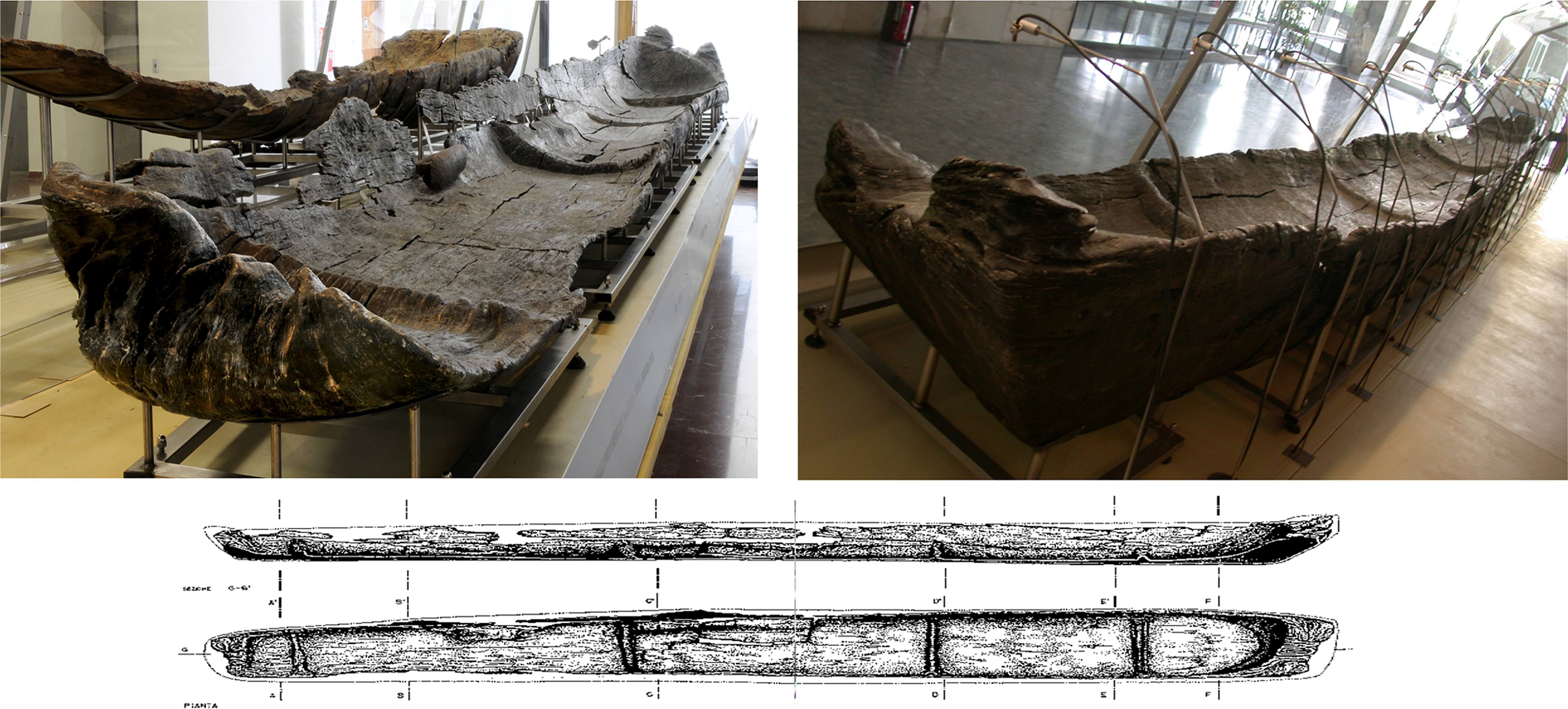The Neolithic sailors of the Mediterranean traveled aboard sophisticated vessels that already contained many of the nautical solutions seen on modern boats. The quality and complexity of these prehistoric crafts indicate that several major advances in sailing were achieved during the late Stone Age, paving the way for the spread of the ancient world’s most important civilizations.
It’s well known that maritime trade links existed in the Mediterranean during the Neolithic, although until now it was unclear how adept these early mariners were at handling the waves. Navigating through this uncertainty, the authors of a new study have analyzed five dug-out canoes that were discovered at a 7,000-year-old settlement that now lies at the bottom of an Italian lake.
Known as La Marmotta, the site is submerged beneath 8 meters (26 feet) of water and a further three meters (10 feet) of sediment, approximately 300 meters (985 feet) from the present shoreline of Lake Bracciano, near Rome. Thought to have been inhabited between 5700 and 5150 BCE, the ancient settlement is described by the researchers as the earliest Neolithic lakeshore village in the central Mediterranean.
Of the five canoes found at the site, the largest was made from an enormous oak trunk and measured 10.43 meters (34 feet) in length. According to the authors, four “transversal reinforcements” on the base of the vessel “would have increased the durability of the hull and protected it, as well as improving its handling.”
Even more remarkably, the researchers found three T-shaped wooden items on the starboard side of the craft, each featuring multiple holes. “The characteristics and position of these objects suggest that they might have been used to fasten ropes tied to a possible sail or to join other nautical elements such as a stabilizer or even another boat to create a double hull in the form of a catamaran,” they write.
“Those strategies would have provided greater safety and stability, and greater capacity for the transport of people, animals and goods.”

This prehistoric canoe was carved out of an oak trunk.
The second canoe was made from a hollowed-out alder trunk and contained a “mushroom-shaped” piece of wood with a single hole in it. Noting the similarity between this object and “modern bollards seen in our ports,” the authors “suggest that its function might have been precisely that, to secure the canoe when the water level rose in the lake.”
Of the remaining three boats, one was shaped from alder, one was carved from poplar, and one was fashioned from a beech tree. According to the researchers, the diversity of wood types used for the boats indicates that the prehistoric builders had a keen appreciation of the different properties of each material.
Oak, for instance, may have been selected for its durability, while alder was probably used as it is light and resistant to cracking.
“Direct dating of Neolithic canoes from La Marmotta reveals them to be the oldest in the Mediterranean, offering invaluable insights into Neolithic navigation,” said the authors in a statement. “This study reveals the amazing technological sophistication of early agricultural and pastoral communities, highlighting their woodworking skills and the construction of complex vessels.”
Given the size of the canoes, the researchers suspect that they were probably intended for use far beyond Lake Bracciano. They therefore speculate that the boats may have been sailed down the River Arrone – which connects the lake to the Mediterranean Sea – before continuing their voyage to foreign lands.
Evidence for these overseas trips can be found in the numerous exotic artifacts uncovered at La Marmotta, including Greek and Baltic pottery as well as obsidian tools from the islands of Lipari and Palmarola. The seaworthiness of the vessels has also been demonstrated by a group of experimental archaeologists who built a replica of one of the canoes back in 1998 and sailed over 800 kilometers (500 miles) from Italy to Portugal.
The study has been published in the journal PLOS ONE.
Source Link: 7,000-Year-Old Neolithic Boats Were Incredibly Sophisticated And Surprisingly Modern